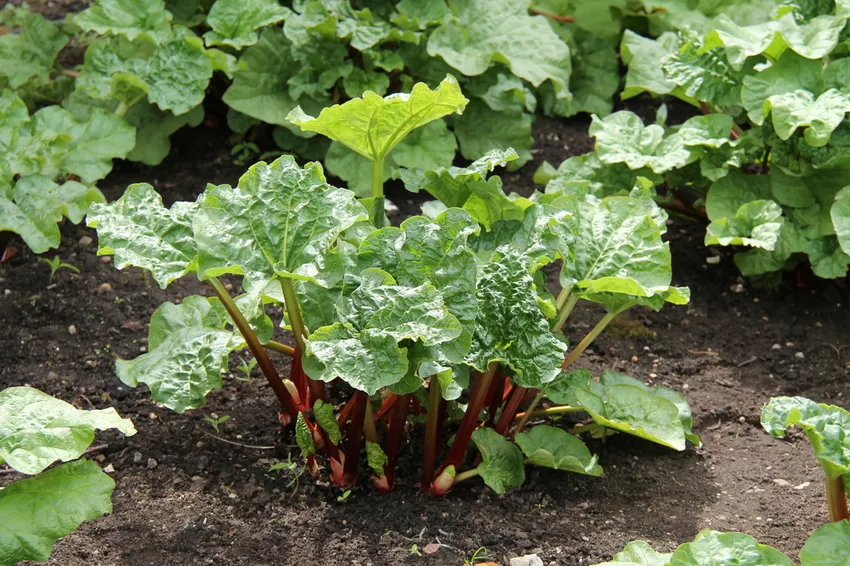Extremely easy to care for, rhubarb is one of the most popular plants that should not be missing in any kitchen garden. Unlike the original form of the "barbarian root" (Rheum barbarum), the cultivated cultivated forms taste less tart but aromatically sour. So that you can reap high yields, it is important to give the stem vegetables the best possible space and to support vigorous growth with the right care measures.
 Rhubarb can be harvested over several years
Rhubarb can be harvested over several years
The site
Rhubarb prefers humus and nutrient-rich, well-drained soil. Full sun is not necessary, because the stemmed vegetables feel better in a partially shaded location. This should be bathed in sunlight for a few hours a day so that the plant develops strong stems.
When planting, keep in mind that rhubarb is a perennial that can grow rapidly. One square meter is the absolute minimum for weaker-growing, red-fleshed varieties such as "Holsteiner blood". Green-fleshed rhubarb spreads even more and should get about 1.5 square meters.
soil preparation
In order to meet the requirements of the stem vegetable, you must first loosen the soil deeply and remove all weeds.
- Mix sandy substrate with plenty of leaf humus, as this increases the soil's ability to store water.
- Insert the rhubarb and pour very thoroughly.
- Then work in compost around the perennial, which you have enriched with horn shavings (€32.93).
- The stem vegetables appreciate a protective layer of bark mulch that slowly decomposes.
The care
- Rhubarb is thirsty and needs plenty of watering, and not just in the main growth phase of May and June.
- Since only the stems are used in the kitchen, you can spread the large leaves around the plant as valuable mulch material.
- Fertilizers with compost and horn shavings in spring cover the nutrient requirements.
- If the harvest time in June is coming to an end, provide the stem vegetables again with organic vegetable fertilizer. (7.49 €)
- Rhubarb is extremely frost hardy. Additional winter protection is not necessary.
Rhubarb is very robust and is avoided by snails and voles. Occasionally, however, it is attacked by leaf spot diseases. It is then sufficient to break out all affected leaves and dispose of them in the household waste.
How and when can I harvest?
If you want to harvest aromatic rhubarb for many years, you should be patient and break out the stalks at the earliest in the second, preferably in the third year after planting. In order not to weaken the plant too much, only remove a good third to about half of the leaves during the entire harvest period.
This lasts from May to the end of June. After that, the oxalic acid content of the stem vegetables increases so much that it should no longer be eaten.
tips
You should never cut out rhubarb stalks, but always break them out of the starting point with a slight jerk.